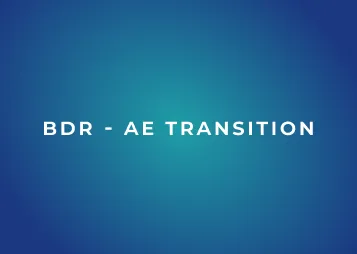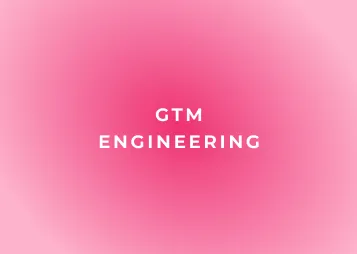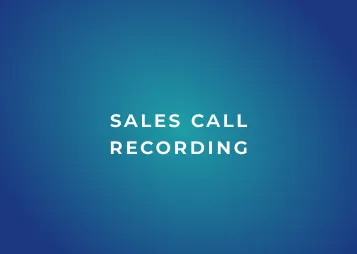60-Second Summary
The leap from BDR to AE is a defining sales career milestone - bringing new responsibilities, pressures, and opportunities. As a BDR, you focused on prospecting and booking meetings; as an AE, you now own the full sales cycle, from discovery to close. Success hinges on three pillars: (1) Mastering sales discovery; (2) Connecting product capabilities to customer needs; and (3) Leveraging cross-functional allies. Transitioning from BDR to AE is challenging but achievable: prioritize deep discovery, personalized demos, and strong cross-team collaboration to accelerate ramp-up, build trust, and consistently close high-value deals.
---
The jump from Business Development Representative (BDR) to Account Executive (AE) is a major milestone in any sales career. I've recently gone through it myself here at Jiminny and let me tell you, it’s a rollercoaster.
As a BDR, you were responsible for prospecting, setting meetings, and passing qualified leads to the closing team. While extremely exciting, the shift from BDR to AE will bring new pressures. And don’t go thinking you can wave goodbye to cold calling forever - self-generation is a big play for AEs too!
In your new role, the closing responsibilities fall directly on your shoulders. An exciting promotion, but the transition can also be daunting.
So how do you ensure success in your new AE role?
Here are my three biggest learnings to shift smoothly from BDR to AE:
A strong sales discovery is everything
The foundation of every sales cycle is an excellent discovery process. This is your opportunity to truly understand a prospect’s needs, pains, and goals. You can’t effectively position your solution unless you grasp their challenges.
And while you might think you’d got to grips with this in your BDR days, the AE role is all about understanding the depth and complexity of each prospect’s world.
Approach each discovery with a clear methodology to uncover the prospect’s pressing issues. Likely your team or organization will have a chosen methodology, but if not, there are plenty of great ones to choose from. Follow a consistent structure from call to call. Start broad and hone in on pain points. Ask open-ended questions that can’t be answered with a simple “yes” or “no.” Actively listen instead of thinking about your next question and take detailed notes.
Never stop being a student of your prospect's business. The discovery process is ongoing, not a one-and-done step. So make time for discovery in every interaction, whether a short phone call or formal presentation. There are always more layers to peel back that will inform your solution positioning and aid the relationship as the prospect turns into a long-term customer.
Sharp discovery skills open the door to closed deals. Nail the discovery and you’ll win over prospects by uncovering true needs.
Crucially in your discovery call, avoid the temptation to jump into a product demo too quickly. The more time you invest upfront in discovery, the better you’ll understand how to tailor your solution. Never assume you grasp their needs without digging deeper through smart questioning.
Connect product capabilities to customer needs
Now that you’ve completed a great discovery, the next step is demonstrating how your product solves your prospect’s specific problems.
When introducing a capability, explain why it matters to this customer. Use the vocabulary and pain points they described during your discovery conversations. Make it clear that you were listening closely to their issues and that your features address them.
Avoid launching into generic product pitches. Overwhelming prospects with every bell and whistle will gloss over how you solve their unique challenges. Cherry pick the three or four capabilities that most directly map to the prospect’s needs. And make those connections explicitly clear.
Tightly linking product capabilities to the prospect's pains shows them that you are giving them your full attention and have listened closely to understand their specific needs. Targeted demos that solve their unique challenges will win over customers far more than generic feature dumping. Do the work to tailor your demos to resonate based on their specific business situation and use case.
Leverage experts and allies
In your previous BDR role, you might have had the option to punt on questions outside your expertise, knowing you can pass the lead and their questions on to someone else soon enough. As an AE, prospects will expect you to have answers to these deeper questions.
Be ready to address tough product, onboarding, billing, and troubleshooting questions. But don’t go beyond your bounds. Know when you need to loop in other experts for support - this will in fact position you as more credible and trustworthy. Flying solo isn’t good for you or the prospect.
Build allies across departments who can equip you with answers when needed:
Engineering - for technical product questions. Understand who your product experts are who can answer tricky technical questions about advanced functionality, integrations, APIs, etc. Depending on the complexity of your product, this may even be a handful of individuals each with their own expertise.
Sales enablement and CS - for implementation and onboarding details. Get to know customer-facing players who can help explain rollout plans, training options, and launch timelines. They'll need first-hand experience of implementation and account complexities to guide prospects through nuances, so they know what to expect.
Finance - for pricing and billing policies. A finance buddy who can quickly clarify pricing proposals, payment terms, invoicing plans, etc is a great ally. They'll need a snapshot of the deal size and structure to provide specific guidance and might help you get a few over the line with a cheeky discount.
Support - for answers on service and troubleshooting. Identify go-to teammates who can speak to response times, SLAs, escalation processes, and common trouble areas. Support readiness demonstrates your commitment to long-term partnership, as well as transparency about finding and fixing any problems.
Make sure you have people in each department who are available quickly to support you in your calls. And brief them on the prospect so they can swiftly handle any queries in the best way possible. We use Slack as an easy and quick way to get answers for prospects live on calls, which makes every win a more collaborative and thorough sale.
Also, don’t be afraid to admit to prospects when you need to refer to other experts rather than guessing or winging an answer. Demonstrate that you have a strong cross-functional network that you can leverage to get them solutions.
Moving from BDR to AE is an accomplishment worth celebrating. But the work isn’t done yet. Implementing my learnings will ensure you start strong in your new sales role and build a foundation for continued success. Lean heavily into discovery, tightly link demos to prospect needs, and know when to tap into your expert network. With this approach, you’ll smoothly handle all the new responsibilities on your plate.
And finally… congratulations on taking your sales career to the next level! Whether you’ve just got the promotion or you’re eyeing it up for the future. You’re in for one hell of a ride!
Mike Richardson is an AE at Jiminny, previously leading our BDR team. With over four years of business development experience, he knows a thing or two about diving into customer problems and creating great solutions and long-lasting relationships.
You might also like...
Meeting Booked - A BDR’s checklist following a successful call





.webp)






